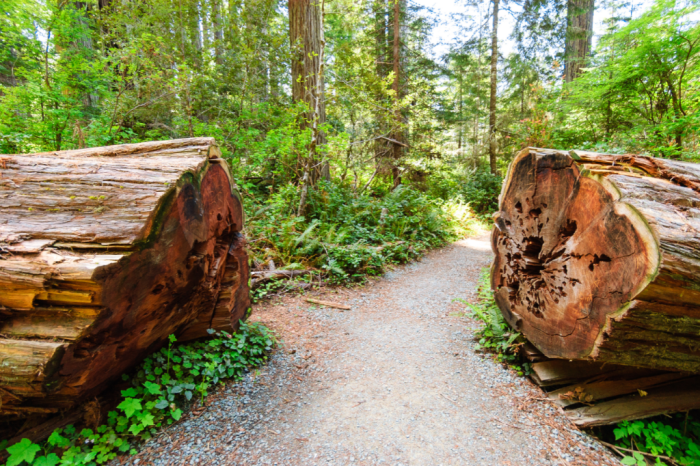
Embark on a thrilling adventure with Mountain Biking in National Parks, where the rush of biking meets the serenity of nature. Explore the perfect balance between excitement and conservation in this exhilarating activity.
Discover the top parks, essential safety measures, environmental impact, health benefits, community vibes, gear essentials, and more in this comprehensive guide.
Introduction to Mountain Biking in National Parks

Mountain biking in national parks has become increasingly popular in recent years, attracting outdoor enthusiasts seeking adventure and adrenaline in breathtaking natural landscapes. This outdoor activity not only offers a thrilling experience but also brings numerous benefits to physical and mental health.
Benefits of Mountain Biking
- Improves cardiovascular fitness and muscle strength
- Enhances coordination and balance skills
- Reduces stress and anxiety levels
- Boosts mood and overall mental well-being
Preserving Nature
Mountain bikers must adhere to strict regulations to minimize their impact on the environment and wildlife while enjoying the trails. Respecting designated paths, avoiding sensitive habitats, and practicing Leave No Trace principles are essential to ensure the preservation of these natural ecosystems for future generations to enjoy.
Best National Parks for Mountain Biking
When it comes to mountain biking, there are several national parks around the world that offer thrilling trails for riders of all levels. Each park has its unique features and terrain that make it a must-visit destination for mountain biking enthusiasts.
Top National Parks for Mountain Biking
- Whistler Mountain Bike Park, Canada: Known for its world-class downhill trails and stunning mountain views, Whistler is a mecca for mountain bikers seeking an adrenaline rush.
- Moab, Utah, USA: Moab is famous for its red rock landscapes and challenging trails that cater to both beginners and expert riders. The Slickrock Trail is a must-ride for its technical features and breathtaking scenery.
- Queenstown, New Zealand: With a variety of trails ranging from flowy singletracks to technical descents, Queenstown offers a diverse mountain biking experience amidst the stunning backdrop of the Southern Alps.
- Pisgah National Forest, North Carolina, USA: Pisgah’s rugged terrain and extensive trail network make it a favorite among riders looking for a true backcountry experience. The forest is known for its challenging climbs and fast, technical descents.
Safety Measures and Regulations
When mountain biking in national parks, it is crucial to prioritize safety measures and adhere to regulations set in place to protect both bikers and the environment.
Essential Safety Gear
- Helmet: Always wear a properly fitted helmet to protect your head in case of falls or accidents.
- Gloves: Invest in padded gloves to improve your grip and protect your hands during rough rides.
- Eye Protection: Wear sunglasses or goggles to shield your eyes from debris, branches, and sunlight.
- Appropriate Clothing: Dress in moisture-wicking and breathable clothing suitable for biking to stay comfortable and avoid chafing.
- First Aid Kit: Carry a basic first aid kit with essentials like bandages, antiseptic wipes, and pain relief medication.
Rules and Regulations in National Parks
- Stay on Designated Trails: Follow the marked trails and avoid veering off the designated paths to protect the natural habitat.
- Respect Wildlife: Keep a safe distance from animals, do not feed them, and avoid disturbing their natural behavior.
- Yield to Hikers and Equestrians: Give the right of way to hikers and horseback riders, especially on narrow trails.
- Check Park Guidelines: Familiarize yourself with specific rules and regulations of the national park you are visiting before biking.
Preserving the Environment
- Leave No Trace: Pack out all your trash and dispose of it properly to keep the trails clean and preserve the environment.
- Avoid Sensitive Areas: Stay on designated trails and avoid cycling through fragile ecosystems or off-limits areas.
- Minimize Noise: Keep noise levels low to avoid disturbing wildlife and other park visitors enjoying the peaceful surroundings.
- Be Mindful of Flora: Avoid trampling on vegetation and be mindful of plant life while biking through the national park.
Environmental Impact of Mountain Biking

Mountain biking in national parks can have both positive and negative impacts on the environment. While it provides a great way to explore the natural beauty of these areas, it can also lead to erosion, habitat destruction, and disruption of wildlife. It is essential for bikers to adopt sustainable practices to minimize their impact and for national parks to implement regulations to ensure responsible biking.
Ecological Effects of Mountain Biking
- Increased soil erosion due to the wear and tear of trails by bike tires.
- Habitat destruction as bikers venture off designated trails, trampling vegetation and disturbing wildlife.
- Disruption of wildlife behavior and nesting patterns, leading to negative impacts on local ecosystems.
Sustainable Practices for Bikers
- Stay on designated trails to minimize habitat destruction and erosion.
- Avoid riding in wet or muddy conditions to prevent further trail damage.
- Yield to hikers and wildlife to reduce disturbances and promote coexistence.
Initiatives by National Parks
- Implementing trail maintenance programs to repair and prevent erosion on biking trails.
- Designating specific biking areas to concentrate the impact and protect sensitive ecosystems.
- Educating visitors about responsible biking practices and the importance of preserving the environment.
Health Benefits of Mountain Biking
Mountain biking offers a wide range of health benefits, both physical and mental. Here’s a breakdown of how this outdoor activity can contribute to your overall well-being:
Physical Fitness Benefits
- Improves cardiovascular health: Mountain biking is a great way to get your heart pumping and improve your cardiovascular fitness.
- Strengthens muscles: Riding over rough terrain and uphill challenges your leg muscles, helping to build strength and endurance.
- Burns calories: A vigorous mountain biking session can burn a significant amount of calories, aiding in weight management and overall fitness.
- Enhances balance and coordination: Maneuvering through tricky trails requires balance and coordination, which can improve with regular biking.
Mental Health Advantages
- Reduces stress: Spending time in nature and engaging in physical activity can help reduce stress levels and promote relaxation.
- Boosts mood: The release of endorphins during exercise can elevate mood and improve overall mental well-being.
- Increases focus and concentration: The concentration required to navigate trails can improve focus and mental clarity.
Promotes Overall Well-being
Mountain biking not only provides physical and mental health benefits but also promotes overall well-being by offering a fulfilling outdoor experience that connects you with nature and boosts your sense of accomplishment.
Community and Culture Around Mountain Biking
Mountain biking enthusiasts form a vibrant community with a strong sense of camaraderie, especially in national parks where they come together to share their passion for the sport.
Events and Competitions
Mountain biking culture is celebrated through various events and competitions held in national parks. These gatherings bring together riders of all skill levels to showcase their talent and push their limits in a supportive environment. From downhill races to endurance events, these competitions not only highlight the thrill of the sport but also foster a sense of unity among participants.
Role in Local Economies
Mountain biking plays a significant role in boosting local economies and tourism in areas surrounding national parks. The influx of riders seeking new trails and experiences stimulates businesses such as bike shops, gear rentals, accommodations, and eateries. Additionally, organized mountain biking events attract spectators and participants from afar, further contributing to the economic growth of these regions.
Gear and Equipment for Mountain Biking
Mountain biking in national parks requires specific gear and equipment to ensure a safe and enjoyable experience. Having the right tools can make a significant difference in your ride.
Essential Gear and Equipment
- Helmet: A properly fitting helmet is crucial for protecting your head in case of falls or accidents.
- Gloves: Cycling gloves provide comfort, reduce vibrations, and protect your hands during long rides.
- Hydration Pack: Staying hydrated is essential, especially on longer rides where access to water might be limited.
- Repair Kit: Carry tools for basic repairs like a multi-tool, tire levers, spare tubes, and a mini-pump.
- Appropriate Clothing: Wear moisture-wicking clothing and padded shorts for comfort and protection.
Types of Bikes for Various Terrains
- Hardtail Bikes: Ideal for smooth trails and cross-country rides, featuring front suspension only.
- Full Suspension Bikes: Suited for rough terrains and downhill trails, offering front and rear suspension for better control.
- Fat Bikes: Designed with wide tires for better traction on snow, sand, or mud, perfect for exploring diverse landscapes.
- Electric Mountain Bikes: Assist riders with pedaling, enabling longer rides and conquering challenging terrains with ease.
Advancements in Gear and Technologies
- Carbon Fiber Frames: Lightweight and durable frames that enhance performance and agility on the trails.
- Tubeless Tires: Reduce the risk of flats and provide better traction while riding over rocks and roots.
- Dropper Seatposts: Allow riders to quickly adjust their seat height on the fly, improving comfort and maneuverability.
- Electronic Shifting Systems: Provide precise and effortless gear changes for a smoother riding experience.
Final Review
As you conclude your journey through the world of Mountain Biking in National Parks, remember to tread lightly, embrace the camaraderie, and relish the unique blend of adrenaline and preservation that this activity offers.
Q&A
Is mountain biking allowed in all national parks?
Mountain biking regulations vary by park, so it’s best to check with each park before hitting the trails.
What gear is essential for mountain biking in national parks?
Key gear includes a helmet, gloves, appropriate clothing, water, repair kit, and a first aid kit.
How can bikers minimize their environmental impact?
Bikers should stay on designated trails, avoid disturbing wildlife, and follow park guidelines for responsible biking.
Are there specific trails suitable for beginners?
Many national parks offer beginner-friendly trails with varying levels of difficulty to accommodate all skill levels.





